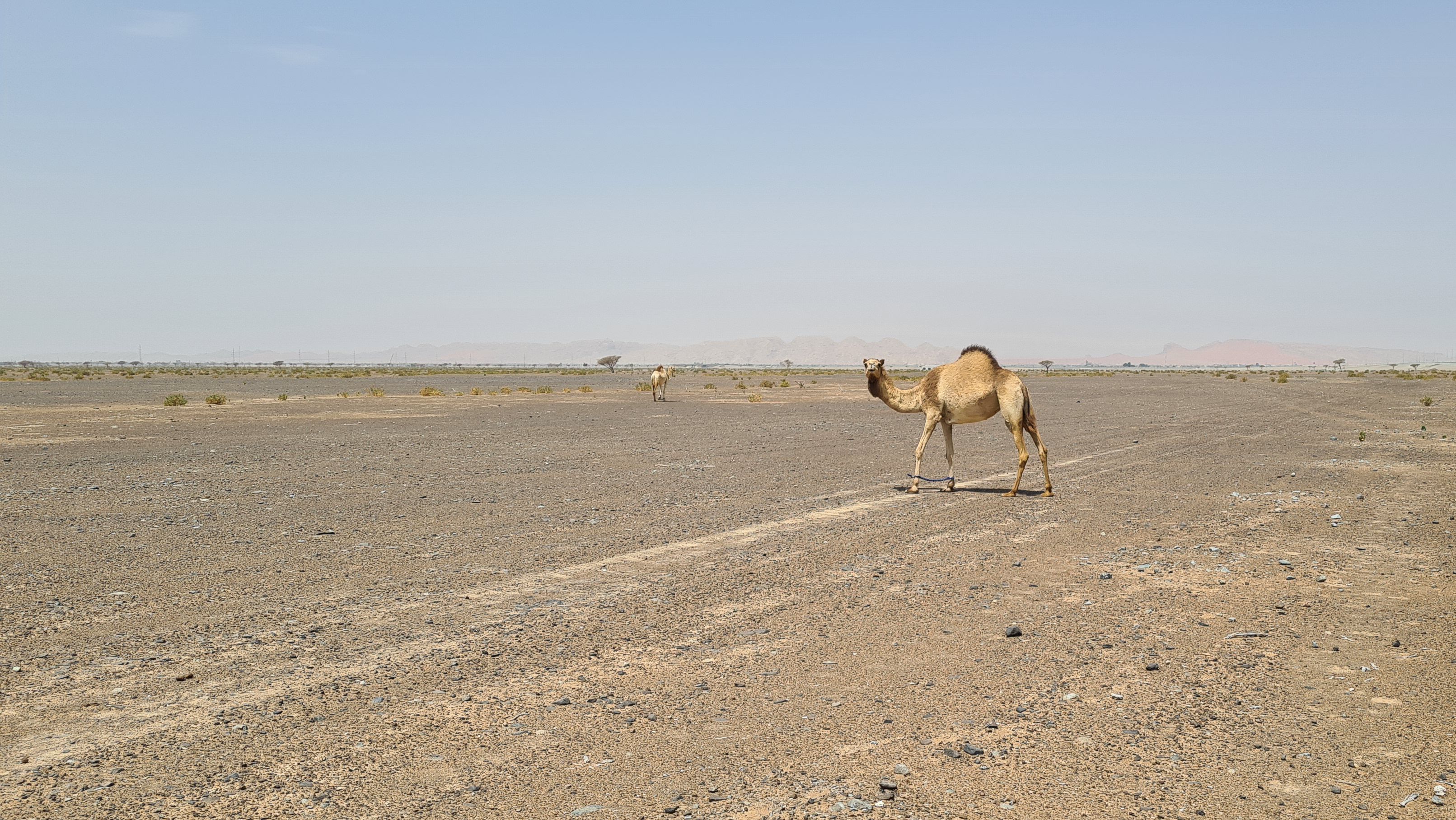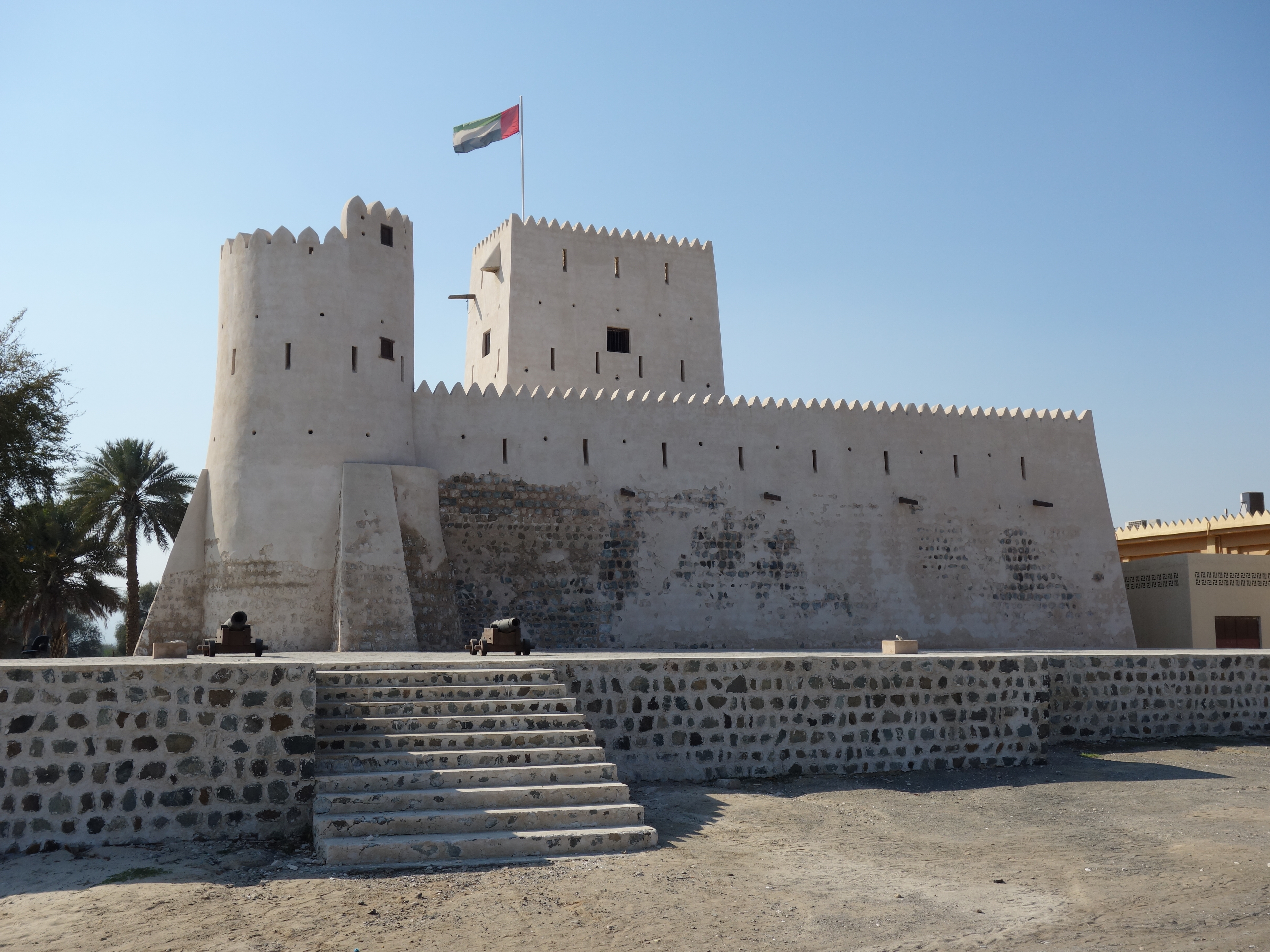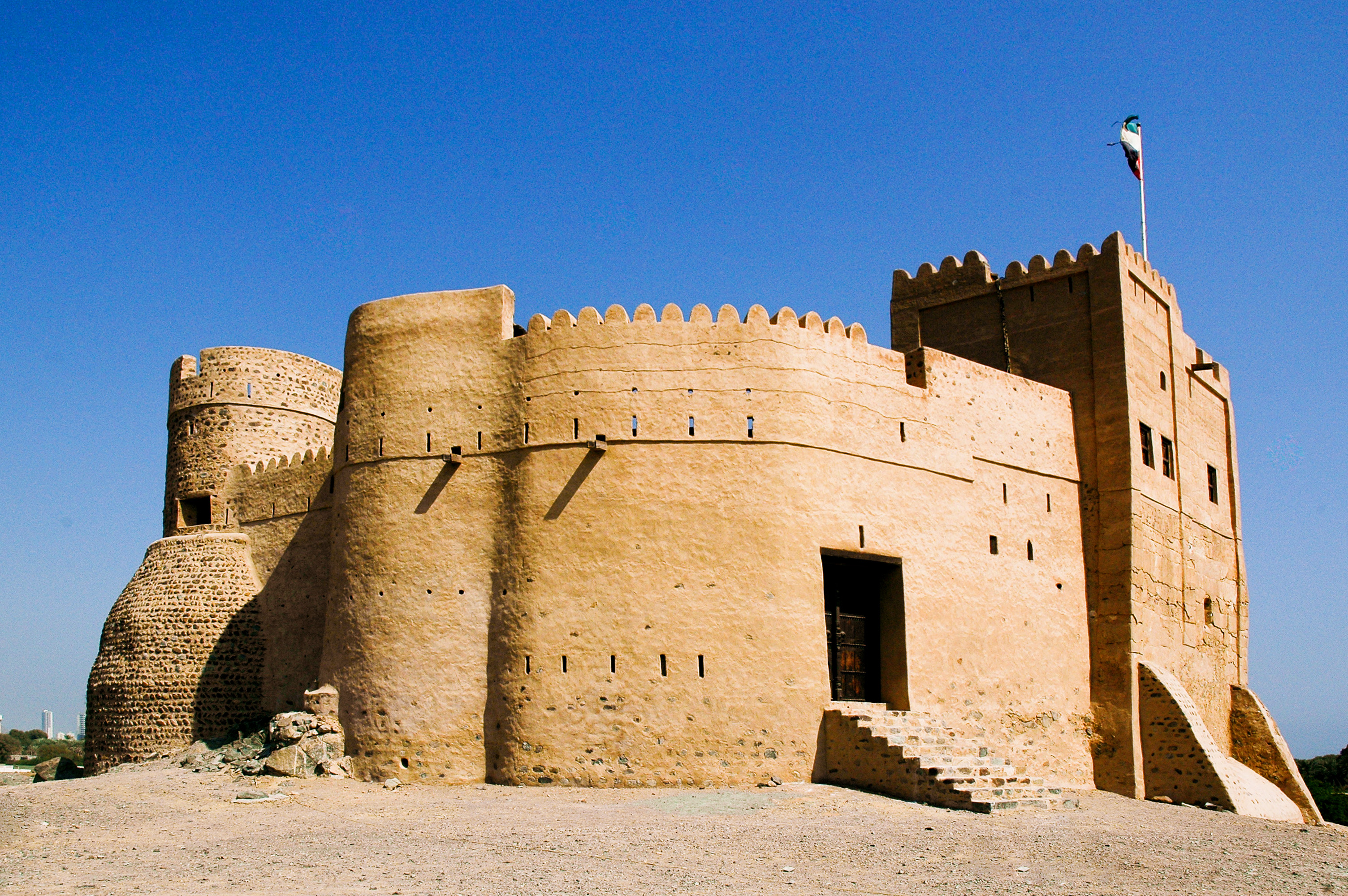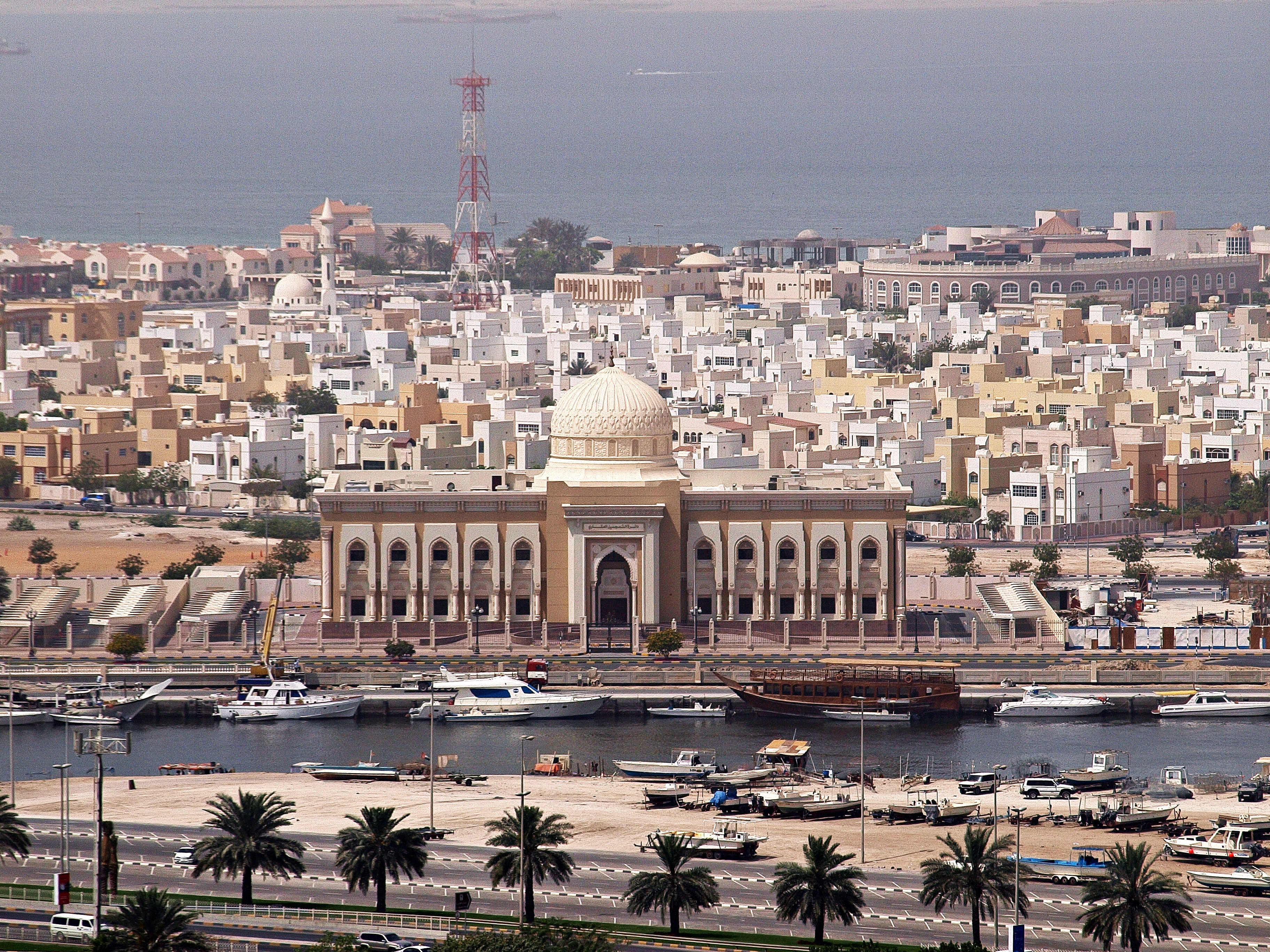|
Sharqiyin
The Sharqiyin ( ar, الشرقيون, singular Al Sharqi ar, الشرقي) is a tribe of the United Arab Emirates (UAE). The Sharqiyin were long the dominant tribe along the East coast of the Trucial States (and the second most numerous in the area around the start of the 19th century), an area known as Shamailiyah. A 1968 census showed 90% of the tribal population of Fujairah was Sharqiyin. They were traditionally dependents of Sharjah and, over the centuries, made several attempts to secede and declare independence, finally practically managing this from 1901 onwards and finally gaining British recognition as a Trucial State, Fujairah, in 1952. They settled all along the East Coast of the Trucial States, from Kalba to Dibba, as well as in the Wadi Ham and Jiri plain and by the turn of the 20th century they were some 7,000 strong. Three sections of the tribe are notable, the Hafaitat (from which the ruling family of Fujairah derives), the Yammahi and the Hamudiyin. After th ... [...More Info...] [...Related Items...] OR: [Wikipedia] [Google] [Baidu] |
Al Bithnah Fort
Bithnah Fort is a traditional double story rock, coral and mudbrick fortification located in the Wadi Ham, near the village of Bithnah in Fujairah, United Arab Emirates. The fort has played a significant role in the history of the Emirates, particularly in the emergence of Fujairah as an independent emirate in the early 20th century. With a controlling position overlooking the Wadi Ham, the fort replaced an Iron Age fortification. Prior to the construction of the metalled road between Fujairah City and Masafi in the 1970s, traffic to the interior from the coast passed through the bed of the wadi, controlled by Bitnah Fort, which has through the ages been a keenly contested strategic holding and was to form a key mainstay in the fortunes of the Sharqiyin through the 18th and early 19th centuries. The fort Bithnah Fort is a rectangular construction with two round corner towers. A rectangular guard's room gives the outward appearance of forming a third tower. It is principally c ... [...More Info...] [...Related Items...] OR: [Wikipedia] [Google] [Baidu] |
Naqbiyin
The Naqbiyin ( ar, النقبي, singular Al Naqbi) is a tribe of the United Arab Emirates (UAE). They are mostly settled within the emirates of Sharjah and Ras Al Khaimah and have long been influential in the tribal politics of both emirates. By the turn of the 20th century, the Naqbiyin had mostly settled in the emirate of Sharjah and were to be found in Khor Fakkan, Kalba as well as Dibba and Fahlain (today a suburb of Ras Al Khaimah). They had also settled at Khatt and Daftah in the Wadi Ham. Altogether, the settled population at that time was mostly involved in agriculture and numbered some 1,800 people. Ras Al Khaimah The tribe's settled territory included the Wadi Naqab in Ras Al Khaimah, to which the tribe gave its name. The tribe dispersed from the agriculturally rich wadi after a series of disputes with the pre-Al Qasimi local rulers. The tribe has traditionally been considered close to the Al Qasimi. Khatt and Fahlain, two villages on the Jiri plain where the Naqbi ... [...More Info...] [...Related Items...] OR: [Wikipedia] [Google] [Baidu] |
Al Sharqi
The Al Sharqi ( ar, الشرقي) family is the ruling royal family of Fujairah, one of the seven emirates that together comprise the United Arab Emirates (UAE). Founding Fujairah The name derives from the singular of Sharqiyin, long the dominant tribe along the East coast of the Trucial States (and the second most numerous in the area around the start of the 19th century), an area known as Shamailiyah. The Sharqiyin were traditionally dependents of Sharjah and, over the centuries, made several attempts to secede and declare independence, finally practically managing this from 1901 onwards and finally gaining British recognition as a Trucial State in 1952. List of Al Sharqi rulers * 1879–1936: Hamad bin Abdullah Al Sharqi * 1936–1938: Saif bin Hamad Al Sharqi * 1938–1975: Mohammed bin Hamad Al Sharqi * 1975–present: Hamad bin Mohammed Al Sharqi Sheikh Hamad bin Mohammed Al Sharqi (; born 22 February 1949) is the ruler of the Emirate of Fujairah in the United A ... [...More Info...] [...Related Items...] OR: [Wikipedia] [Google] [Baidu] |
Shihuh
The Shihuh ( ar, الشحوح, ') is an Arab tribe living in the United Arab Emirates (UAE) and Oman. In the singular, the name is Al Shehhi, a common family name in the UAE and Oman today. Inhabiting the northern part of the Hajar Mountain range, specifically in the Ruus Al Jibal (Musandam Peninsula), the tribe has long been influential in the affairs of both the east and west coast settlements of the northern UAE and Oman and has fiercely maintained both its identity and independence. Sections The Shihuh are divided into two main sections, the Bani Hadiyah and Bani Shatair. The Bani Hadiyah splits into several subsections: the Bani Muhammad; Bani Ali; Bani Ham Mazyud and Khanazirah. The Bani Shatair splits into the Khanabil; Kumazarah; Mahabib and Maqadilah. At the turn of the 20th century, the tribe numbered some 21,500 people and was mostly settled around the Rus Al Jibal mountains, as well as Sha'am, Ghalilah, Ghubb and Khor Khwair in Ras Al Khaimah. In total, some 14,50 ... [...More Info...] [...Related Items...] OR: [Wikipedia] [Google] [Baidu] |
Jiri Plain
The Jiri plain is an area of gravel plain extending across areas of Southern Ras Al Khaimah, Eastern Sharjah and Western Fujairah, United Arab Emirates (UAE). The area, some 15 miles in length and 8 miles in breadth, is triangulated with the villages of Khatt and Habhab to the North; Adhen to the East and Dhaid to the South. To the West the plain is enclosed by sand dunes. The soil of the Jiri plain is darkened by debris brought down by seasonal waters from the mountains, which helps to define its rich, loamy character and high carbonate content (from the outwash of Cretaceous limestone). The plan is thickly populated by acacia (''Acacia tortilis'') and ghaf trees, as well as tamarisk and other hardy varieties. A number of deep aquifers run under the plain. The settled population of the area at the time of Lorimer's 1915 ''Gazetteer of the Persian Gulf'' was some 1,000 strong, mostly members of the tribes of Awanat, Mazari, Naqbiyin, Sharqiyin (in the area of Wadi Ham) and ... [...More Info...] [...Related Items...] OR: [Wikipedia] [Google] [Baidu] |
Kalba
Kalba () is a city in the Emirate of Sharjah in the United Arab Emirates (UAE). It is an exclave of Sharjah lying on the Gulf of Oman coast north of Oman. Khor Kalba (Kalba Creek), an important nature reserve and mangrove swamp, is located south of the town by the Omani border. Kalba Mangrove reserve is open to the public and was developed as an eco-tourism resort by the Sharjah Investment and Development Authority (Shurooq). A number of conservationists and ecologists have expressed concern regarding the project. History Shell middens dating back to the fourth millennium BCE have been found at Kalba, as well as extensive remains of Umm Al Nar era settlement. Portuguese The town was captured by the Portuguese Empire in the 16th century and was referred to as ''Ghallah''. It was part of a series of fortified cities that the Portuguese used to control access to the Persian Gulf and the Gulf of Oman, e.g. Khor Fakan, Muscat, Sohar, Seeb, Qurayyat, Muttrah. Kalba Fort, tod ... [...More Info...] [...Related Items...] OR: [Wikipedia] [Google] [Baidu] |
United Arab Emirates
The United Arab Emirates (UAE; ar, اَلْإِمَارَات الْعَرَبِيَة الْمُتَحِدَة ), or simply the Emirates ( ar, الِْإمَارَات ), is a country in Western Asia (The Middle East). It is located at the eastern end of the Arabian Peninsula and shares borders with Oman and Saudi Arabia, while having maritime borders in the Persian Gulf with Qatar and Iran. Abu Dhabi is the nation's capital, while Dubai, the most populous city, is an international hub. The United Arab Emirates is an elective monarchy formed from a federation of seven emirates, consisting of Abu Dhabi (the capital), Ajman, Dubai, Fujairah, Ras Al Khaimah, Sharjah and Umm Al Quwain. Each emirate is governed by an emir and together the emirs form the Federal Supreme Council. The members of the Federal Supreme Council elect a president and vice president from among their members. In practice, the emir of Abu Dhabi serves as president while the ruler of Dubai is vice pre ... [...More Info...] [...Related Items...] OR: [Wikipedia] [Google] [Baidu] |
Fujairah Fort (1)
Fujairah Fort () is a fort in the city of Fujairah, United Arab Emirates (UAE). Dating back to the 16th century, it is the among the oldest as well as the largest castles in the country. It is noted for playing significant roles in fighting back the wave of colonialism. Today, it is among the main tourist attractions in the city.قلاع وحصون الفجيرة صورة من الماضي الجميل ''Al-Khaleej''. Retrieved January 13, 2018. It is probably the oldest fort in the UAE and was occupied by the Wahhabists. Location The fort is located about 2 km from central modern Fuja ...[...More Info...] [...Related Items...] OR: [Wikipedia] [Google] [Baidu] |
Rashid Bin Saeed Al Maktoum
Sheikh Rashid bin Saeed Al Maktoum ( ar, ٱلـشَّـيْـخ رَاشِـد بِـن سَـعِـيْـد آل مَـكْـتُـوْم, Ash-Shaykh Rāshid bin Sa`īd Āl Maktūm; 11 June 1912 – 7 October 1990) was the vice president and second prime minister of the United Arab Emirates and ruler of Dubai. He ruled Dubai for 32 years from 1958 until his death in 1990. Development of Dubai Sheikh Rashid was responsible for the transformation of Dubai from a small cluster of settlements near the Dubai Creek to a modern port city and commercial hub. A quote commonly attributed to Sheikh Rashid reflected his concern that Dubai's oil, which was discovered in 1966 and which began production in 1969, would run out within a few generations. "My grandfather rode a camel, my father rode a camel, I drive a Mercedes, my son drives a Land Rover, his son will drive a Land Rover, but his son will ride a camel",While the following quote is commonly attributed to Sheikh Rashid, it i ... [...More Info...] [...Related Items...] OR: [Wikipedia] [Google] [Baidu] |
Fujairah Fort
Fujairah Fort () is a fort in the city of Fujairah, United Arab Emirates (UAE). Dating back to the 16th century, it is the among the oldest as well as the largest castles in the country. It is noted for playing significant roles in fighting back the wave of colonialism. Today, it is among the main tourist attractions in the city.قلاع وحصون الفجيرة صورة من الماضي الجميل ''Al-Khaleej''. Retrieved January 13, 2018. It is probably the oldest fort in the UAE and was occupied by the s. Location The fort is located ab ...[...More Info...] [...Related Items...] OR: [Wikipedia] [Google] [Baidu] |
Emirate Of Sharjah
The Emirate of Sharjah (; ar, إِمَارَة ٱلشَّارِقَة ') is one of the emirates of the United Arab Emirates, which covers and has a population of over 1,400,000 (2015). It comprises the capital city of Sharjah, after which it is named, and other minor towns and exclaves such as Kalba', Al Dhaid, Dibba Al-Hisn and Khor Fakkan. The emirate is an absolute monarchy. It has been ruled by Sultan bin Muhammad Al-Qasimi since 1972, except for a six-day period during an attempted coup d'etat by his brother, Sheikh Abdulaziz bin Mohammed Al-Qasimi. History Human settlement in the area covered by the emirate has existed for over 120,000 years, with significant finds made of early axes and stone tools as well as Copper and Iron Age implements in Al Dhaid, Al Thuqeibah, Mileiha, Tell Abraq, Muwailah, Al Madam and Jebel Faya. Archaeological finds in the Mleiha area point to human habitation consistent with the spread of humanity from Africa to the wider world, evidenced ... [...More Info...] [...Related Items...] OR: [Wikipedia] [Google] [Baidu] |
Saqr Bin Khalid Al Qasimi
Sheikh Saqr bin Khalid Al Qasimi (1883–1914) was the Ruler of Sharjah, a Trucial State and now one of the United Arab Emirates, from 1883–1914. He took control over Sharjah in a coup during the absence of his uncle, Salim bin Sultan Al Qasimi, and ruled both Sharjah and, from 1900 until his death in 1914, Ras Al Khaimah. Accession Saqr bin Khalid was left in charge of Sharjah when his unpopular uncle, Salim bin Sultan Al Qasimi, travelled to Ras Al Khaimah and he took the opportunity to seize power over the town. He was quickly supported by the Rulers of Ras Al Khaimah, Umm Al Qawain, Ajman and Dubai. Having cemented his position, he conferred a pension on the former Ruler, Salim bin Sultan Al Qasimi, which guaranteed him an annual payment as well as the retention of his property in Sharjah and the primacy over the island of Abu Musa. There were issues both with Salim's conduct and Saqr's payment of the pension, culminating in a meeting in Ajman taking place in 1884 with the ... [...More Info...] [...Related Items...] OR: [Wikipedia] [Google] [Baidu] |
.jpg)



.jpg)


